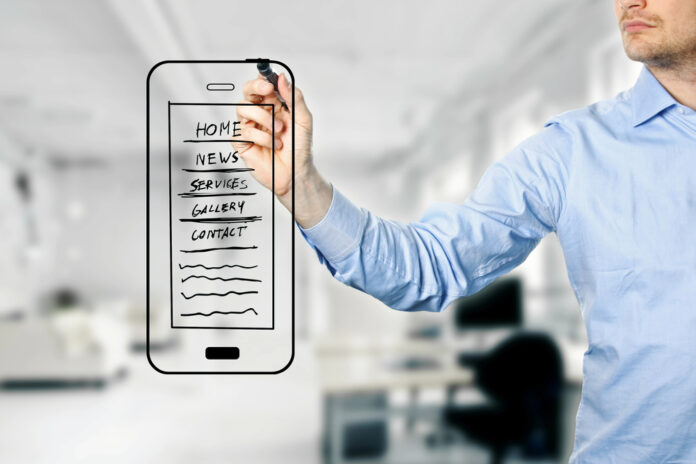
Mobile apps have become an integral part of our daily lives. They provide us with a wide range of functionalities, from entertainment and productivity to e-commerce and communication. However, the success of a mobile app is not solely determined by its initial downloads but rather by its ability to engage and retain users over time. User engagement is the key to building a loyal customer base and driving long-term growth for your mobile app.
User engagement on mobile apps is crucial for several reasons:
- Engaged users are more likely to continue using your app, leading to higher retention rates and a stronger customer base.
- Once users are engaged, they are inclined to make in-app purchases, subscribe to premium features, or interact with advertisements, which can increase your app’s revenue.
- Such users provide valuable feedback and data, allowing you to better understand their preferences and tailor your app’s features to meet their needs.
- Engaging users can promote a strong connection with your mobile app, leading to increased brand loyalty and advocacy.
According to recent industry reports, the average mobile app has a 90-day user retention rate of just 32%. This statistic highlights the importance of implementing effective strategies to improve and maintain user engagement on your mobile app.
While developing a comprehensive engagement strategy is important, sometimes small, incremental changes can have a significant impact on your app’s user engagement. In the following sections, we’ll explore various tactics you can implement to enhance engagement on your mobile app.
Understand User Behavior and Preferences
To enhance user engagement, it’s crucial to have a deep understanding of your target audience’s behavior and preferences. This can be achieved through various methods, such as user research, data analysis, and competitor analysis.
You can conduct surveys, interviews, and usability testing to gain insights into your users’ needs, pain points, and motivations. Furthermore, you can use analytics tools to track user interactions, session duration, and in-app behavior to identify patterns and trends. Last but not least, examine the engagement strategies used by your competitors and identify areas where your app can differentiate itself.
Enhance User Interface and User Experience
The user interface (UI) and user experience (UX) of your mobile app play a crucial role in user engagement. A study by Forrester Research found that a well-designed UI could increase conversion rates by up to 200%. This underscores the importance of a clean, intuitive design that enhances user experience. A seamless UI reduces friction and makes it easier for users to navigate and interact with the app, leading to increased engagement.
Focus on creating a clean, intuitive, and visually appealing design that aligns with your target audience’s preferences. Ensure your app’s navigation is straightforward and easy to understand, allowing users to quickly find the information or features they need.
Develop a seamless onboarding process that introduces your app’s key features and functionalities, helping users get started quickly. Additionally, utilize high-quality images, icons, and animations to create a visually engaging and cohesive user interface. Optimize your app’s performance and responsiveness to provide a smooth and efficient user experience across different devices and screen sizes.
Implement Gamification Elements
Gamification, the integration of game-like elements into non-game contexts, can be a powerful tool for enhancing user engagement. Incorporating gamification elements such as badges, leaderboards, and rewards can significantly enhance user engagement by tapping into the human desire for achievement and competition. A study by TalentLMS found that 89% of users are more engaged when an app incorporates gamification.
For example, Fitbit has effectively used gamification to keep users motivated and engaged in their fitness journeys. By offering badges for milestones and encouraging friendly competition through leaderboards, Fitbit has created a community of active users who regularly interact with the app to track their progress and compete with friends.
Consider incorporating the following gamification techniques into your mobile app:
- Rewards and Achievements: Implement a system of rewards, badges, or achievements that users can earn for completing specific actions or milestones within your app.
- Leaderboards and Competitions: Create leaderboards or challenges that allow users to compete against each other.
- Progress Tracking: Provide users with visual representations of their progress, such as progress bars or level-up systems, to keep them engaged.
- Personalized Challenges: Offer customized challenges or tasks based on each user’s preferences and behavior to make the experience more personalized.
Personalize the User Experience
Personalization is a key factor in improving user engagement. By tailoring the app experience to individual users, you can create a more relevant and compelling interaction. Apps that tailor content and recommendations to individual users see significantly higher engagement rates. According to a report by Accenture, 91% of consumers are more likely to shop with brands that provide relevant offers and recommendations.
If you want to personalize the user experience in your mobile app, start with displaying content, features, or recommendations based on each user’s interests, behavior, and preferences. Allow users to personalize the app’s appearance, notifications, or other settings to match their preferences.
Moreover, dynamically adjust the app’s functionality, content, or user interface based on the user’s location, device, or contextual information. Divide your user base into distinct segments based on their characteristics, behaviors, or preferences, and tailor your engagement strategies accordingly.
One notable example is the fashion e-commerce app, Stitch Fix. Stitch Fix uses advanced algorithms and data analytics to provide personalized clothing recommendations to its users. Each user starts by filling out a detailed style profile, which includes preferences, size, budget, and specific style requests.
The results of this personalization strategy are impressive. Stitch Fix reported that personalized recommendations have led to a 50% increase in customer retention rates. Additionally, customers who receive personalized recommendations tend to spend more time on the app and have higher average order values.
Use Push Notifications and In-App Messaging
Push notifications, when used judiciously, can also boost engagement. Localytics reports that users who receive personalized push notifications are more likely to engage with an app, with a 54% increase in engagement. However, it’s crucial to strike the right balance; excessive notifications can lead to annoyance and increased churn rates.
Slotswise is one of the companies that took advantage of push notifications. The company decided to leverage push notifications to increase user engagement and promote slot apps effectively. They focused on creating personalized, timely, and relevant push notifications to capture user interest without being intrusive. Using data analytics, Slotswise crafted personalized push notifications that highlighted popular slot apps, exclusive promotions, and customized recommendations.
The push notification strategy yielded significant results for Slotswise. The company saw a 45% increase in user engagement with their platform. Users were more likely to visit the site and interact with the content after receiving personalized notifications. The personalized approach led to a 30% increase in conversion rates for app downloads. Users who received tailored notifications were more inclined to download and try the promoted slot apps.
To kickstart push notifications for your mobile app, consider the following tips:
- Craft push notifications and in-app messages that are tailored to each user’s interests, behavior, and stage in the customer journey.
- Ensure that your messages are triggered by relevant user actions or events, making them more valuable and less intrusive.
- Send push notifications and in-app messages at the most appropriate times, taking into account user preferences and app usage patterns.
- Mix up the content of your messages, including updates, promotions, reminders, and personalized recommendations, to keep users engaged.
Encourage User Feedback and Reviews
Incorporating user feedback into the development process can lead to higher engagement. Users appreciate when their suggestions are heard and acted upon, which fosters loyalty and satisfaction. A survey by Apptentive found that 98% of users are more likely to use a service when they feel their feedback is valued.
To encourage feedback, you can integrate feedback forms or surveys directly into your app, making it easy for users to share their thoughts and suggestions. Ask for feedback at specific points in the user journey, such as after completing a key task or upon app exit.
You can further consider offering rewards, discounts, or other incentives to users who provide feedback or reviews. Demonstrate that you value user input by actively responding to feedback and implementing changes based on their suggestions.
Trello, the project management app, has successfully built a loyal user base by actively soliciting and implementing user feedback, leading to continuous improvements that resonate with its users. Encouraging users to leave reviews and provide feedback not only improves the app but also builds a community of engaged users who feel invested in its success.
Measure and Track App Engagement
To ensure the effectiveness of your engagement strategies, it’s crucial to measure and track key performance indicators (KPIs) related to user engagement. Some important metrics to consider include:
- Daily Active Users (DAU): The number of unique users who interact with your app on a daily basis.
- Monthly Active Users (MAU): The number of unique users who interact with your mobile app within a 30-day period.
- User Retention Rate: The percentage of users who continue to use your app over time, often measured at 7, 30, and 90 days.
- Session Length: The average duration of each user session within your app.
- In-App Interactions: The number and types of actions users take within your app, such as completing tasks, making purchases, or engaging with content.
Enhancing user engagement on your mobile app is an ongoing process that requires a deep understanding of your target audience, a willingness to experiment with different strategies, and a commitment to continuously improving the user experience. By implementing the small changes outlined in this article, you can take meaningful steps towards increasing user engagement and driving long-term success for your mobile app.
Find a Home-Based Business to Start-Up >>> Hundreds of Business Listings.














































